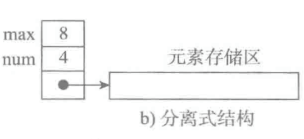爬取网页:http://www.toutiao.com/search/?keyword=%E8%A1%97%E6%8B%8D
1,分析爬取页面,找到页面信息
在Chrome按F12打开开发者工具,查找网页内容的请求位置
找了doc中发现内容都是加载,查看JS内容页面内容无关。
在XHR中发现到我们想要的内容,页面内容是通过ajax加载进来的

查看Headers,可以得到Request URL和Query String,构造成完整的请求URL

编写请求索引页代码:
python">def get_index(offset, keyword):
# 网页下拉后,页面重新加载新的内容,offset也增加20,因此offset和翻页有关
# keyword刚好是我们要搜索的内容-街拍
dict = {
'offset': offset,
'format': 'json',
'keyword': keyword,
'autoload': 'true',
'count': '20',
'cur_tab': '1'
}
# urlencode()把字典变成字符ASCII字符串
# 构造索引页url
url = 'http://www.toutiao.com/search_content/?' + urlencode(dict)
print('索引页url' + url)
try:
res = requests.get(url)
if res.status_code == 200:
return res.text
return None
except RequestException:
print('索引页请求失败')
return None2,分析索引页代码,得到详情页内容

在开发者工具里面查看到代码,发现是比较整齐的js代码,用json.loads载入代码,再经过处理就可以得到想要的信息
代码:
python">def parse_index(html):
# 请求的链接返回的json文件,用json.loads载入变成字典,解析出每个详情页的url
try:
js = json.loads(html)
if js and 'data' in js.keys():
for item in js.get('data'):
if item.get('article_url'):
# 用生成器返回url
yield item.get('article_url')
except JSONDecodeError:
pass3.请求详情页
请求详情页和索引页类似,复制粘贴详情页请求,加上if 内容==None判断跳过URL出错的异常
python">def get_detail(url):
print('下载:' + url)
if url != None:
try:
res = requests.get(url)
if res.status_code == 200:
return res.text
return None
except RequestException:
print('详情页请求失败')
return None4.得到详情页信息
详情页的图片信息在Doc也就是正常html文件中,但是是通过需要通过js加载后进行解析
标题信息比较简单,用BeautifulSoup.select就可以查找到。
通过对比发现,网页有2种不同的页面,一种静态的下拉页面,一种是左右播放页面,两个页面title标题信息的获取是一致的,但是图片信息不同。
下拉式:

图片url代码在content后面,使用正则表达式解析可以得到
播放页面:

图片url代码在 gallery:里面,使用正则表达式匹配,然后分解后可以去掉一些文字,转换成js字典格式,就可以到url了
最后以字典的形式返回爬取的信息
python">def parse_detail(html, url):
if html == None:
return None
# 通过BeautifulSoup来查找title
soup = BeautifulSoup(html, 'lxml')
title = soup.select('title')
title = title[0].text if title else''
# 因为有两个不一样的页面,所以有2个不一样的正则分析式
images_pattern1 = re.compile('img src="(.*?);', re.S)
images_pattern2 = re.compile('gallery: {(.*?)},.*?siblingLis', re.S)
res = re.findall(images_pattern1, html)
# 第一种页面,如果能匹配到内容就存储起来
if res != []:
results = [result.rstrip('"') for result in res]
for ima in results: download_image(ima)
return{
'title': title,
'url': url,
'images': results
}
# 第二种页面,使用第二个正则表达式进行匹配,并储存结果
else:
res = re.search(images_pattern2, html)
if res:
data = json.loads(res.group(0).lstrip('gallery: ').rstrip('siblingLis').strip().rstrip(','))
if data and 'sub_images' in data.keys():
sub_images = data.get('sub_images')
images = [item.get('url') for item in sub_images]
for image in images: download_image(image)
return{
'title': title,
'url': url,
'images': images
}5,下载,存储图片
python">def download_image(url):
print('下载:'+url)
try:
res = requests.get(url)
if res.status_code == 200:
# 直接调用保持图片,传入参数网页的二进制信息
save_iamge(res.content) # res.contenst是二进制信息,因为下载图片需要二进制。
return None
except RequestException:
print('详情页请求失败')
return None
def save_iamge(content):
# 构造保持路径, {0}为当前目录路径,{1}为md5生成值,避免重复下载,{2}为文件格式
file_path = '{0}/images/{1}.{2}'.format(os.getcwd(), md5(content).hexdigest(), 'jpg')
print(file_path)
if not os.path.exists(file_path): # 如果 路径文件不存在 就下载
with open(file_path, 'wb') as f:
f.write(content) # 传入二进制信息
f.close()
6,整合代码添加循环,爬取多页信息
python">import json
from json import JSONDecodeError
from urllib.parse import urlencode
from hashlib import md5
import re
import os
from requests.exceptions import RequestException
import requests
from bs4 import BeautifulSoup
def get_index(offset, keyword):
# 网页下拉后,页面重新加载新的内容,offset也增加20,因此offset和翻页有关
# keyword刚好是我们要搜索的内容-街拍
dict = {
'offset': offset,
'format': 'json',
'keyword': keyword,
'autoload': 'true',
'count': '20',
'cur_tab': '1'
}
# urlencode()把字典变成字符ASCII字符串
# 构造索引页url
url = 'http://www.toutiao.com/search_content/?' + urlencode(dict)
print('索引页url' + url)
try:
res = requests.get(url)
if res.status_code == 200:
return res.text
return None
except RequestException:
print('索引页请求失败')
return None
def parse_index(html):
# 请求的链接返回的json文件,用json.loads载入变成字典,解析出每个详情页的url
try:
js = json.loads(html)
if js and 'data' in js.keys():
for item in js.get('data'):
if item.get('article_url'):
yield item.get('article_url')
except JSONDecodeError:
pass
def get_detail(url):
print('下载:' + url)
if url != None:
try:
res = requests.get(url)
if res.status_code == 200:
return res.text
return None
except RequestException:
print('详情页请求失败')
return None
def parse_detail(html, url):
if html == None:
return None
# 通过BeautifulSoup来查找title
soup = BeautifulSoup(html, 'lxml')
title = soup.select('title')
title = title[0].text if title else''
# 因为有两个不一样的页面,所以有2个不一样的正则分析式
images_pattern1 = re.compile('img src="(.*?);', re.S)
images_pattern2 = re.compile('gallery: {(.*?)},.*?siblingLis', re.S)
res = re.findall(images_pattern1, html)
# 第一种页面,如果能匹配到内容就存储起来
if res != []:
results = [result.rstrip('"') for result in res]
for ima in results: download_image(ima)
return{
'title': title,
'url': url,
'images': results
}
# 第二种页面,使用第二个正则表达式进行匹配,并储存结果
else:
res = re.search(images_pattern2, html)
if res:
data = json.loads(res.group(0).lstrip('gallery: ').rstrip('siblingLis').strip().rstrip(','))
if data and 'sub_images' in data.keys():
sub_images = data.get('sub_images')
images = [item.get('url') for item in sub_images]
for image in images: download_image(image)
return{
'title': title,
'url': url,
'images': images
}
def download_image(url):
print('下载:'+url)
try:
res = requests.get(url)
if res.status_code == 200:
# 直接调用保持图片,传入参数网页的二进制信息
save_iamge(res.content) # res.contenst是二进制信息,因为下载图片需要二进制。
return None
except RequestException:
print('详情页请求失败')
return None
def save_iamge(content):
# 构造保持路径, {0}为当前目录路径,{1}为md5生成值,避免重复下载,{2}为文件格式
file_path = '{0}/images/{1}.{2}'.format(os.getcwd(), md5(content).hexdigest(), 'jpg')
print(file_path)
if not os.path.exists(file_path): # 如果 路径文件不存在 就下载
with open(file_path, 'wb') as f:
f.write(content) # 传入二进制信息
f.close()
def main(offset):
urls = get_index(offset, '街拍')
for url in parse_index(urls):
res = get_detail(url)
parse_detail(res, url)
# # 测试单个页面:
# url = 'https://temai.snssdk.com/article/feed/index?id=3972873&subscribe=6768458493&source_type=24&content_type=2&create_user_id=6100&classify=2&adid=__AID__'
# res = get_detail(url)
# print(parse_detail(res, url))
if __name__ == '__main__':
# 传入翻页内容,每次offset变化20,因此0-10也每次*20
for i in range(0, 10):
main(i*20)





